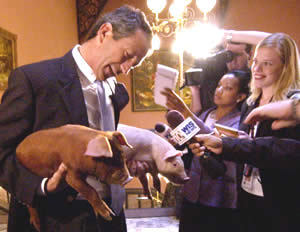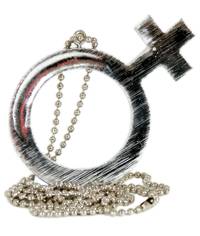
“But why did those people hurt baby Jesus?”
It’s a tough question to answer, and I guess that’s what I get when I let the Gospel tunes of Johnny Cash so deeply influence my young son.
As I’m sure many of you have been doing these past few weeks, my wife and I have spent a little time each night playing with the Nativity set with our son. We have a little plastic toy one with smiling shepherds, serious looking kings, graceful angels and assorted farm animals. We tell the story of Mary and Joseph traveling on the donkey and the kings from the east following the star. As I mentioned around this time last year, the Christmas story is so compelling that it only needs retelling. Embellishment seems almost to detract from it. So my son enjoys the characters and puts the baby Jesus on the backs of the sheep and has him ride the cow. But even as he plays and we look on smiling, his little mind is churning and thinking about the words to one of Cash’s tunes that I listen to in the car. It’s called “It was Jesus” and the lines in question are as follows:
“Well he healed the sick and afflicted, and raised them from the dead,
So they stuck him on an old rugged cross and put thorns upon his head.”
And so my son turns to me and asks, “Which one of them puts the horns on baby Jesus’ head?”
Where to begin?
One of the things my wife and I have noticed about many of the children’s Bibles and kids’ book versions of Bible stories is that the authors and illustrators “clean up” the stories for children. Noah’s ark becomes a story about making a big happy floating zoo – exit stage right the drowning sinners and wrathful God. David scares off the angry Goliath and becomes a wise king – fade to black before the new king has a chance to send a friend to his death so that he might take his beautiful wife. And Jesus? Well the life of Jesus is reduced to a story about a little baby in a barn who grows up to feed and heal people. And one day he disappears for a while, but the comes back for a bit and then disappears again – cue the celestial music, clouds and glorious sunset.
So when my son asks, “Which one of them puts the horns on baby Jesus’s head?” I’m sure he was thinking of cow horns or reindeer antlers. I stopped and explained to him that the word was “thorns” not “horns,” and then we had to talk about what thorns were – the small cactus in our window helped out at this point – and then I tried to explain that the Romans put thorns on Jesus’s head so that they would hurt him. And that’s when he asked, “But why did those people hurt baby Jesus?”
There are at least two things worth reflecting on here. The first one I’ll only mention briefly. Maybe I’ll come back to it some day. The second issue will be the topic of the rest of this blog.
First, it seems to be worth noting that the image of Jesus that we get at Christmas presents us with a human being who offers no challenge. There is – and I mean this in a spiritual, ethical, political, and philosophical sense – nothing to push back against. As a child, Jesus is a kind of blank slate upon which any Christian of nearly any persuasion can project their own values. Liberals and Conservatives, Fundamentalists and Pentecostals, Roman Catholics and Baptists can all see in this infant an embodiment of their ideals. Why indeed would anyone want to hurt this baby? How could anyone object to this image? Whatever the scandal of Christianity is, it must encompass more than the imagery of the Nativity.
Second, what do you tell a child about the dark side of the Christian story? Should we share the stories about the murder of Hebrew baby boys in Exodus and the Gospels? How far should one go when explaining the crucifixion to a child? Certainly no pre-Kindergartener needs to see Gibson’s Passion of the Christ, but can’t we find a better way of plugging the hole in the children’s books than simply having Jesus disappear for three days. Where is the push back? Where is the challenge? More importantly, as parents and teachers and uncles and aunts, how should we introduce the darker side of the Christian narrative to children–because the entire Gospel story stops being Gospel and becomes something syrupy sweet (sweet but definitely not nutritious) when we drop out the dark side.
I’m writing here about introducing the dark side of the Gospel to children, but our hesitancy on these matters, especially as LIBERAL Evangelicals, is symptomatic of issues that go much deeper and pervade our entire witness. Why is there pain? Why do so many people intentionally cause harm? Why did Jesus have to suffer and die? And yes, why would anyone want to hurt baby Jesus? It’s worth considering this question again and again, especially when we know that so many children live in pain.
Christmas is the one time of the year when we as Evangelicals do not need an excuse to introduce the topic of Jesus and the Gospel narrative. It’s there right in front of us on Christmas cards and ornaments, on the Charlie Brown Christmas Special and the seasonal kiosks in the malls. We drown in Jesus imagery, but do we run the risk of wasting this opportunity when the images we share, the songs we sing, and the stories we tell stop short of the Christian dark side? The world does not need another sweet cliche, it needs a tough Gospel that acknowledges evil, offers strength and direction, and perhaps most importantly, holds up an image of Jesus Christ that offers some push back against easy answers and casual values. I love the baby Jesus and so enjoy teaching this story to my son, but I also know that he will need more than the Christmas Jesus – no crying he makes – if he is to live a rich Christian life in our fallen world.
In the 2006 film, Talladega Nights: The Ballad of Ricky Bobby, the title character always addresses his prayers to the little baby Jesus. The gag here depends on the audience recognizing the spiritual immaturity of a man whose understanding of God never grew beyond the Nativity image. The same character has the tastes, manners, and morals of a thirteen year old boy, so his spiritual immaturity is matched by his boorish and immature behavior in other areas of life. How do we avoid the same immaturity as Evangelicals? As Liberals how do push beyond the easily palatable baby Jesus and engage the tougher images of Jesus?
Faithful readers will recognized my usual posing of a question to which I have no answer. My only suggestion this holiday season for pushing deeper is to consider the Jesus of December 26.
What comes next? How do we push ourselves, our friends, and our children beyond the sheep, kings, and manger and into the more challenging world of the Gospels? On December 26 I think I’ll listen again to Johnny Cash sing some of my favorite hymns and Gospel tunes. His Jesus is tough. That Jesus doesn’t shy away from the difficult questions, and while the Jesus of the old hymns and the four Gospels may not translate nearly as well as the Nativity Jesus into Children’s toys and holiday songs that can be played in public places, the Full Gospel Jesus may sustain us once the trees have been sent through the chipper and lights packed away in the attic for the next eleven months.
Merry Christmas to all of you Liberal Evangelicals! Have a joyous December 25 and a reflective December 26.



